Beverly Gray's Blog: Beverly in Movieland
October 14, 2025
The Sour Stench of Success

My deep dive into the career of Burt Lancaster would nothave been complete without reference to The Sweet Smell of Success, the1957 noir in which everyone is more or less rotten. Hollywood filmmakerslove to delve into the venal side of the entertainment world, often happily focusingon the crass materialism of their own industry. (See, off the top of my head,elements of Sunset Boulevard, Inside Daisy Clover, A Star isBorn, Once Upon a Time in Hollywood, and the recent Babylon.)The Sweet Smell of Success, though, is based in Manhattan, mostly theglitzy stretch of Broadway between 42nd and 57th Streets.Lancaster’s character occupies an elegant penthouse apartment, and is a regularat swanky nightspots like the 21 Club, places where gossip is gospel.
Lancaster plays J.J. Hunsecker, a media personality modeledafter Walter Winchell. He writes a hot gossip column for the New York Globe,and is also a star attraction over the airwaves. The man is all-powerful: heknows just who is canoodling with whom, and can make even a congressman quakewhen he spots an inappropriate dinner companion. The comparison to today’smedia climate is an interesting one: we gather he’s not on the payroll of anypolitical party, but he still has a firm sense of how the world should work,and will gladly punish anyone who tries to cross him. We gather he has nointimate attachment of his own, but puts all his energy into overseeing thelove life of his much younger sister, Susie, who has fallen hard for aclean-cut but independent-minded jazz musician (Martin Milner).
Lancaster’s Hunsecker is unforgettable, but the film reallybelongs to Tony Curtis. (The two had earlier starred together in a box-officehit, 1956’s Trapeze) Curtis, sickof accepting nice-guy roles, here plays a slippery press agent, one who’ll dojust about anything to get his clients’ names in newspaper columns. Young andhungry for success, he’ll hustle, scheme, and try to blackmail the powerfulinto publicizing those on his roster. He feels he has a special “in” withHunsecker, thanks to his willingness to clean up a certain small mess by anymeans necessary, and part of the energy of the story goes into seeing him twisthimself into pretzels to please the man who holds the keys to the kingdom. SaysHunsecker, with a mix of scorn and appreciation, “You’re a cookie full ofarsenic.”
Sweet Smell of Success started out as a differentlytitled story in a 1950 issue of Cosmopolitan. It was written by a youngErnest Lehman, and reflected his own experience as an assistant to a New Yorkpublicist. Eventually Hollywood got wind of Lehman’s writing skills, and hestarted to rack up jobs as a screenwriter. Among his credits prior to the filmversion of Sweet Smell of Success were Sabrina, Somebody Up ThereLikes Me, and The King and I. Later, his major screenwriting hits includedNorth by Northwest, West Side Story, The Sound of Music,and Who’s Afraid of Virginia Woolf? Butwhen it came to Sweet Smell of Success, the dialogue-heavy script required asubstantial rewrite that Lehman was too ill to handle. So the gig eventuallywent to one of Broadway’s most esteemed playwrights, Clifford Odets, who bothrestructured the story and heavily revamped the details, resulting in sometaut, terse dialogue. Here’s one example I like: “The cat’s in the bag and thebag’s in the river.” And I’ve got to putin a word for the great James Wong Howe’s spectacularly moody black-&-whitecinematography.
Dedicated to fellow biographer Beth Phillips, who knowseverything there is to know about Clifford Odets.
October 10, 2025
“The Limey”: Once Upon a Time in Hollywood
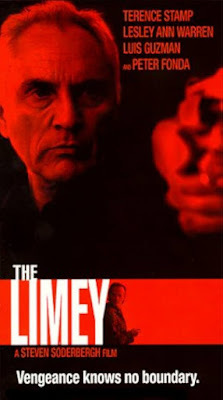
I’ve been aware of TerenceStamp since 1962, when he played the title role in a film adaptation of aHerman Melville novella, Billy Budd. The part, Stamp’s first in anAmerican film, is that of a young 19th century sailor whose optimismand blond beauty have tragic consequences. For Stamp himself the consequenceswere excellent, including an Oscar nomination and a Golden Globe award. But hecertainly didn’t confine himself to playing innocents, as his dangerous allurein The Collector (1965) made quite clear.
Personally I associate Stamp,who died this past August at age 87, with two widely different roles. In 1967’sFar from the Madding Crowd, a lavish period film based on a novel byThomas Hardy, he played a dashing military man who woos and weds thetempestuous Bathsheba Everdene (Julie Christie), only to squander her holdingsand break her heart. In 1994, he was unrecognizable in The Adventures ofPriscilla, Queen of the Desert, a riotous flick about drag queens gallivantingthrough the Australian outback in a colorful tour bus. In this cult favorite,Stamp’s role was that of a transgender woman. It’s been revealed since hisdeath that he had recently completed all of his scenes for Priscilla, Queenof the Desert 2, a film about the challenges of old age that’s currently stillin production.
In reading obits for Stamp, Icame across reference to a Steven Soderbergh thriller I’d never seen. I’ve beena great admirer of Soderbergh’s diverse body of work ever since I saw hispoignant breakthrough indie, Sex, Lies, and Videotape (1989). Nine yearslater, he was widely recognized for Out of Sight, a Florida-set crimecomedy. Based on an Elmore Leonard novel, it elicited sexy, stellarperformances from George Clooney and Jennifer Lopez. One year later, Soderberghwas still working in the crime genre. Stamp was the star of his The Limey,a film about a British Cockney crook who’s also a bereaved father. Fresh out ofprison for the umpteenth time, he hightails it to L.A. to investigate hisdaughter’s sudden death somewhere off Mulholland Drive.
I’d hardly call The Limey acomedy, but there’s humor (of the fish-out-of-water variety) to be found inthis rough and tumble crook experiencing the glitz of Hollywood, a place whereno one seems to understand a word he says. His first contact is a down-to-earthLatino (Luis Guzman) who knew his pretty young daughter from (natch!) an actingclass. Various deadly escapades in thewarehouses of Downtown L.A. lead him eventually to a slick music producer witha fabulous home in the hills. He’s played by a toothy Peter Fonda, who lookslike an updated version of his hipster role in Roger Corman’s L.S.D.-laced TheTrip (1967). He’s fabulously wealthy, he likes keeping beautiful youngwomen on hand, he throws lavish parties, and it’s quite clear he’s up to nogood. Somehow Stamp’s Wilson, while eluding both Fonda’s goons and somenot-entirely-on-the-up-and-up drug agents, manages to accomplish his personalmission without ever getting his clothes mussed.
Soderbergh has always beenbig on experimentation, and The Limey is shot and edited in a flashy stylethat some might find distracting. Nor is this film sexy in the way Out ofSight proved to be. (Who can forget Clooney and Lopez, on opposite sides ofthe law, trapped together in very close quarters in the trunk of a car?) But Ienjoyed seeing Terence Stamp in a different phase of his long career, playing aman taciturn and tough, but a loving father all the same.
October 7, 2025
Dears and Bitches: “The Women”
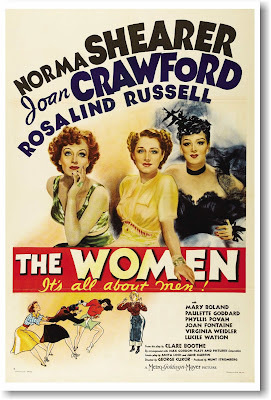
Have times changed? Claire Boothe Luce’s bitchy 1936 socialcomedy, The Women, was a huge Broadway sensation. The rights werepurchased by MGM for a 1939 film that, like the play, features only women inits large cast. That hardly means that men play no part in the Park Avenueworld the work depicts. Virtually everything these soignée females do revolvesaround their intimate connection with (off-screen) men. For MGM, this propertywas a chance to give meaty roles to the many impressive actresses on itsroster. Some, like stars Norma Shearer and Joan Crawford, apparently had theirown off-camera feuds going. In any case, the on-screen bitchery struckaudiences then and now as hilarious, and the film has been rewarded with a spotin the National Film Registry of the Library of Congress.
The Women was vigorously helmed by George Cukor,known at the time as a “woman’s director.” Cukor (whom I was honored tointerview late in his life) could produce work of great subtlety, but TheWomen is hardly what you’d call subtle. Even the opening credits tell usexactly what to think about the cast of characters. Each of the main women isintroduced by her married name: for example, Shearer is labeled as Mrs. StephenHaines (Mary). And before we see a tell-tale closeup of the actress incharacter, there’s a quick image of an appropriate (female) animal. Shearer’s sensible,amiable Mary is depicted as a doe. Her soon-to-be archrival Crawford, in therole of a shopgirl who’s after Mary’shusband, is shown as a sleek, cunning leopard. Third-billed Rosalind Russell,whose capricious character stirs up much of the trouble in the film, is a blackcat. Others on-screen are represented by a monkey, a fox, a lamb, an owl, a cow(we then see everyone’s favorite confidante, played by Phyllis Povah,essentially chewing her cud), and an old mare (that would be homespun MarjorieMain as a Reno landlady).
The outrageousness continues in the film’s opening scenes,set in and around a posh Manhattan health spa full of fawning uniformedattendants . The first thing we see, at the spa’s front door, is two pamperedpooches snarling at one another. Quite soon it’s the woman themselves who aresnarling, while gossiping over the manicure table and pretending to be eachother’s best friends. One spa patron, gazing at another’s face through amagnifying contraption, sweetly declares, “Your skin makes the Rocky Mountainslook like chiffon velvet.” Even Shearer’s appealing Mary will eventually learn,while on a trip to Reno to divorce her straying (but still loving) spouse, thatthere’s no special virtue in being nice: “I’ve had two years to grow claws . .. . Jungle Red.” And speaking of claws, the screen erupts with more than one physicalcat-fight among the ladies who lunch.
Does The Women have any lessons for us? I’m not sosure. True, good-hearted Mary does regain her equilibrium and her spouse, andCrystal heads back to the perfume counter. (These are spoilers, true, but cancertainly be predicted from the film’s opening moments onward.) Still, virtuedoesn’t exactly triumph. In many ways, it’s bitchery that reigns supreme. It’scurious to note that a 21st century film remake was attempted. Ittook fifteen years to develop the project, which ultimately, when released in2008, starred Meg Ryan, Annette Bening,, Eva Mendes, Debra Messing, Jada Pickett Smith, Carrie Fisher, Cloris Leachman, Debi Mazar Bette Midler,and Candice Bergen. Diane English of MurphyBrown fame wrote and directed, but her attempt at an update left critics (andaudiences) distinctly unimpressed.
October 3, 2025
Robert Redford Goes Downhill
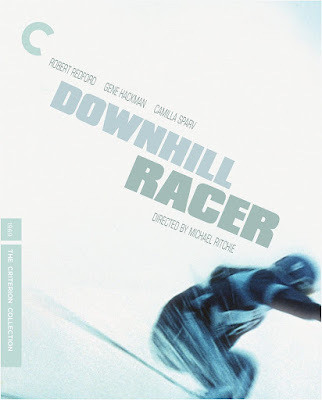
There are those who will tell you that Robert Redford wasthe original choice to play Benjamin Braddock in the 1967 romantic classic, TheGraduate. He was certainly in the running, and wanted the role badly. And,as my Seduced by Mrs. Robinson clarifies, he had just finished starringfor director Mike Nichols in a Broadway hit comedy, Barefoot in the Park,so he seemed to be in a good position to headline Nichols’ planned first film.But, as the film’s producer, Larry Turman, spelled out to me, neither he norNichols was entirely sure that Redford was the right choice to play an awkwardlover who was funny precisely because he was in over his head with a sexy olderwoman. Enter Dustin Hoffman, who turned in a performance that was a comedy gem.
By 1969, Redford had made a half-dozen films, both amiablecomedies and action thrillers. But lightning struck when he joined with PaulNewman for a true blockbuster, Butch Cassidy and the Sundance Kid. Thetwo Hollywood hunks proved to have remarkable comic chemistry in a story lessabout the Old West than about the friendship of two rebellious buddies setagainst a rapidly changing world. Thinking back about the whole of Redford’sacting career, which includes some major thrillers and some films with strongpolitical implications (see The Candidate and, of course, All thePresident’s Men), I’m convinced that as an actor Redford was at his best inroles that combined substance with comic flair. These include Butch Cassidy andThe Sting, two brilliant pairings with Newman, as well as such moremodest efforts as Sneakers (a caper comedy about hackers) and thelate-in-life The Old Man & the Gun, shot when Redford was over 80.
Which brings me to Downhill Racer, made in the sameyear as Butch Cassidy. Michael Ritchie’s first directorial effort,magnificently filmed on some of the world’s great ski slopes, is a gutsy lookat the professional ski circuit, and grapples with the question of what ittakes to be a winner. Redford plays an ambitious young racer, summoned by coachGene Hackman to join the U.S. ski team after (in the film’s highly dramaticopening minutes) a talented skier suffers a bone-shattering fall. We know rightaway that Redford’s character, Dave Chappellet, is good—but also that he’s notparticularly nice. He regards his new teammates as nuisances or rivals, andcan’t be bothered to listen to his coach’s warnings. He’s willing to work hardon his own skills, but camaraderie is not for him.
We understand something about Dave’s psychological makeupduring the off-season, when he goes home to rural Colorado. His curmudgeonlydad, clearly a loner, greets him coldly, showing little interest in his son’sefforts to achieve Olympic gold on the way to fame and fortune. A local flameis thrilled to see him, but clearly it’s only sex he’s after.. The patternrepeats itself in Europe, where the sophisticated assistant (Camilla Sparv) toa manufacturer of ski equipment falls hard for him, only to learn that he’llgive her nothing beyond a roll in the hay. He’s a loner and a user, that’s all.
I won’t go into the end of the film, when his jest to theteam’s #1 skier leads to an outcome he may or may not have anticipated. Is he acarefree hotdogger, or is there something more devious in the back of his mind?That’s an open question, one the film leaves us asking ourselves. I’d muchrather watch Redford again in Butch Cassidy.
September 30, 2025
A Heartfelt “Miss Valentine”
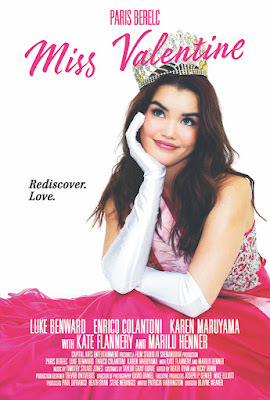
The other day I hadlunch with Peter Pan. Yes, really! Blayne Weaver has been the official voice ofDisney’s classic Peter Pan character since 2001. Leaning into the classic soundof Bobby Driscoll, Disney’s original Peter, Blayne records Peter Pan’s voice for films, TV, and Disney theme parks.Driscoll, I’m sad to report, came to a tragic end at age 31, a victim of drugs,alcohol, and Hollywood burn-out. Blayne, though much less famous, has found away to keep his showbiz career moving forward. Though he started as an actor,and still loves the profession, he’s also keptbusy in recent years as a screenwriter and director, mostly of indie movies ofall stripes. Are you looking for a low-budget thriller? Or a romantic comedy?Blayne adores the whole process, challenges and all. His latest project, arrivingthis week on streaming service Xumo Play, is a holiday-themed rom-com called MissValentine. As he described it to me, “I’m trying to make When Harry Met Sally, with a tinybudget and without Tom Hanks.”
At present he hasalmost a dozen credits as a director, nearly as many as a producer, and anumber of writing credits as well. I met him through my once-upon-a-time Roger Cormanpal, Mike Elliott, who has long specialized (through his company Capital Arts)in direct-to-video-style productions, of which he’s made scores. Capital Arts isbacking Miss Valentine, which takes advantage of Blayne’s longtimeconnection with the state of Virginia where he holds a prestigious teaching postin Shenandoah University’s film department. It seems that nearby Winchester,Virginia hosts an annual springtime Apple Blossom Festival. But cable channelslove holiday themes (Christmas, of course, is the big one), and so Valentine’sDay got the nod. Local pride allowed Blayne and company to shoot theapple-blossom festivities, with organizers permitting cast and crew to addValentine’s Day hoopla to their parade and other events. The neighborhoodturnout gave Miss Valentine a cast of thousands. They got to playthemselves as townsfolk, and also gave a warm welcome to the film’s stars, whoinclude appealing TV personalities Paris Berelc (as the beauty pageant winnerguilty of an unforgivable faux-pas) and Luke Benward, as the young man who’slong fancied her. Many veteran players are featured too, including MariluHenner (Taxi) as a no-nonsense pageant organizer. But despite the film’sbig look, it was shot economically, over a Corman-like period of three six-day weeks.
Blayne is toopractical a guy to be obsessed with any hyper-ambitious future project. (No Megalopolisfor him, I suspect). Having finished Miss Valentine, his currentdream is “getting the next one going.” He’s tried out many genres, but admitsto a fondness for horror comedy, in which “bad things happen to funny people.”
Thinking back to Manic,a film that was his big break as a screenwriter, Blayne has strong feelingsabout the atmosphere he wants to create on a set. This 2001 drama aboutemotionally damaged teens was written with a starring part for himself, but thefunders eventually pushed for big money and a big-name cast. It should havebeen a tremendous break, but the atmosphere on the set was so toxic that hevowed—when he started directing—to take the opposite route. As he says now,“You get the best work from artists when they’re encouraged.” He puts itsuccinctly: he starts each project with “a no-asshole policy.”
Nothing, I suspect,is going to stop Blayne from doing what he loves. As he told me, “I’m my bestme when I’m on set.”
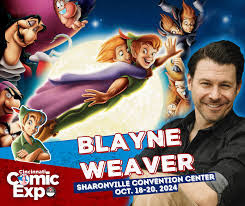
September 26, 2025
Mid-Career Kurosawa, both High and Low
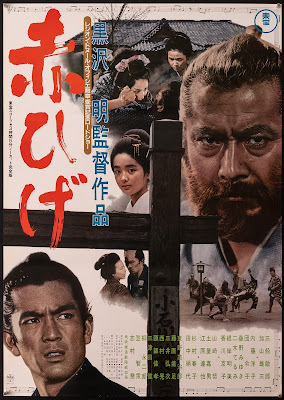 "Red Beard"
"Red Beard" Spike Lee, always shrewd about finding material, turned to afarflung source for his most recent release, Highest 2 Lowest. Hisinspiration for this contemporary crime story was a 1963 drama by Japanesemaster cineaste Akira Kurosawa, known as High and Low. (Its originalJapanese title, Heaven and Hell, is certainly more vivid.) Kurosawa, whoknew something about borrowing from the best, derived his plot from a 1959thriller by Ed McBain (a pseudonym of Evan Hunter). Both films drew fromMcBain’s novel the notion of a wealthy, ambitious man secretly scheming to takeover his industry, but being derailed along the way by the kidnapping of achild.
I haven’t seen Lee’s film, which disappeared rather quicklyfrom local theatres, but as a longtime Kurosawa fan I recently watched Highand Low, which most critics strongly admire. This is not the visceralKurosawa of jidaigeki (period costume dramas) like Rashomon, SevenSamurai, and Yojimbo. Nor is it an elegant take on Shakespeareantragedy (see one of my very favorites, Throne of Blood, which isKurosawa’s remarkable adaptation of Macbeth). High and Low is setin present-day Yokohama, where its central character (Toshiro Mifune, ofcourse) is a successful manufacturer of women’s shoes. (The Spike Lee versionmakes him a record exec, which is certainly a cooler profession.) A Japanesebullet train plays an important role in Kurosawa’s plot, and the kidnapper alsohas drug-dealing on his résumé, preying on immigrant communities.
High and Low (which spends most of its first half inthe main character’s hilltop mansion) seems static and talky at times, but thetension nicely ramps up, and the ending (which apparently Lee doesn’t copy) isthematically as well as dramatically powerful. Kurosawa didn’t plan thisending—in which Mifune and the kidnapper meet face to face under dramaticcircumstances—until he saw the intensity of Tsutomu Yamazaki’s portrayal of anangry young criminal.
For me, one of theintriguing aspects of High and Low is that it is followed in theKurosawa canon by a film that couldn’t be more different. Red Beard (Akahige,1965) returns Kurosawa to the Tokugawa period (early 19thcentury), when clothing and manners were quite distinct from what they are now.It’s a medical drama (based on a book of Japanese stories) that easily calls tomind such all-American projects as a popular TV series of the era, Dr.Kildare. This long-running series, based on a 1938 Hollywood film, pits anidealistic young doctor (Richard Chamberlain) against a shrewd veteran of theprofession (Raymond Massey). During its five-year run, Kildare evolves fromintern into experienced physician, tempering his idealism with lessons learnedon the job.
Red Beard is not so very different, though it’s setin an era when medical knowledge is limited and traditional social values arehard to navigate. One distinction is that the film is named after the seasoneddoctor, not the young one. The nickname Red Beard refers to the characterplayed by Mifune (in his very last Kurosawa role). He’s a dynamo whoseiconoclasm is not always appreciated, though he has a deep commitment to hispatients and his profession. Into his clinic comes young Dr. Yasumoto (YuzoKayama, whom I well remember as a Japanese pop singer). Yasumoto is cocky abouthis intended future: he has studied modern medicine at a Dutch clinic inNagasaki, and he now fully intends to take a cushy post in the court of a locallord. But gradually, under the tutelage of the irascible but brilliant RedBeard, he develop a higher regard for those in genuine need.
The opinions expressed above are all mine, but for afascinating in-depth assessment of the filmmaker at mid-career I strongly recommend Donald Ritchie’s 1965 work,The Films of Akira Kurosawa.
September 23, 2025
Counting Down the Hours with “The Clock”
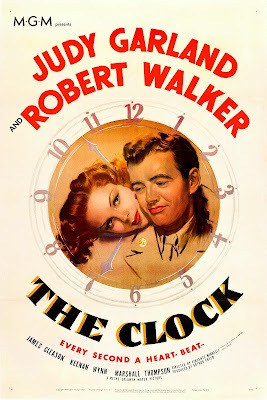
I’m discovering that, in tough societal times like these, Itruly appreciate movies that take me to an earlier era. It’s good to see thatpeople can survive—even thrive—during dark days. Perhaps that’s why I’ve reactedso positively to The Clock, a 1945 romantic drama directed by VincenteMinnelli and starring his soon-to-be wife, Judy Garland, in her firstnon-singing dramatic role. Set against the backdrop of World War II, TheClock gives a happy ending to a tale that is best described as pure wish-fulfillmentfantasy.
The Clock begins with boyish-looking Robert Walker,in full military uniform, arriving at New York’s Grand Central Station. He’s ayoung American G.I., on weekend leave from training camp, and he’s come to the BigApple to look around. I couldn’t help comparingthis opening section to the naïve young sailors on shore leave in a great 1945musical—and subsequent 1949 film—On the Town, which like The Clock celebratesromance but hints at a world war always lurking in the background.
It’s quicklyestablished that Walker’s character, Joe, is a small-town fellow, one who’sencountering for the first time such wonders as an escalator. While hanging outaimlessly in the station, he accidentally trips a pert young lady, whose heelsnaps off of her stylish spectator pump. Mortified, Joe manages to get the shoerepaired, then wonders if he can tag along with its wearer (who of course isGarland) as she heads home from work. Garland’s Alice is naturally wary of thisstranger. But she’s a good-hearted soul and finally agrees to meet him fordinner. Their rendezvous spot: under the clock in the lobby of the AstorHotel.
The clock, of course, soon becomes a symbol of the swiftpassage of time. As the two get to know each other, a dinner date turns into aromantic walk in Central Park. (The camera’s s-l-o-w build-up to the first bigkiss is rather hilarious.) Suddenly it’s midnight, too late for Alice to catcha bus back to her working-class neighborhood. Cabs, as always in NYC, arenearly impossible to get, so Al, a friendly milkman making early morningdeliveries, offers them a ride in his van. But the van gets a flat tire; thethree enter an all-night café to call Al’s company; a drunk attacks poor Al andknocks him out. After the van is repaired, Joe takes over the driving, and heand Alice work together to make all the deliveries on Joe’s route in recordtime. Joe, now recovered, invites them to his home for breakfast; his loyalwife greets them warmly, and the conversation turns to the homey joys ofmarried life.
Now it’s Saturday morning, and the pair have agreed to spendtogether the waning hours before Joe’searly Sunday departure. Enter the challenges of the New York subway system. Ina crowded station, Alice is forced onto a train car, leaving Joe behind. Theirsearch for each other becomes frantic (if only they had cell phones!), mademore desperate by the fact that they don’t know one another’s full names. But, since this is a fairy-tale, they do atlast reunite—and agree that they never want to be parted again. And so theytake steps to make their love permanent, via matrimony.
It's the love-conquers-all ending we’re rooting for, onethat I’m sure was highly necessary in wartime. By 2025 standards, though, thelovers seem painfully naïve. Ironically,both Garland and Walker found no lasting happiness in marriage. Both turned todrink and drugs, and died young.
September 19, 2025
Becoming Baltimorons

I don’t know what there is about Baltimore that makes itsuch a funky film mecca. But Baltimore spawned Barry Levinson, whose firstfilm, Diner (1982), was an homage to his young adult years hanging outin the city of this birth. Levinson quickly moved on to bigger and betterthings, and won an Oscar for directing 1988’s Rain Man, primarily set againstthe bright lights of Las Vegas. But he returned to his Baltimore roots for1987’s Tin Men, 1990’s Avalon, and 1999’s Liberty Heights,while also pursuing a major directorial career elsewhere.
Levinson mayhave mostly traded his hometown for mainstream Hollywood, but John Waters neverleft. Each of his deliberately trashy movies (which include such titles as PinkFlamingos, Polyester, and Cecil B. Demented) is set inBaltimore, where he has assembled a loyal stock company of acolytes.
I bring up all of this because I’ve just seen an amiable newindie called The Baltimorons, directed by Jay Duplass, and co-written byDuplass with Michael Strassner, who also plays the overstuffed but totallyendearing lead. Strassner, a Baltimore native, portrays to perfection a sadsackcomedian and improv actor who—having finally achieved sobriety—is trying hard toturn his life around. It all happens on Christmas Eve in Baltimore. WhenStrassner’s Cliff breaks a tooth and needs an emergency dental appointment, hehas no idea that he and the one dentist who’ll meet his needs will soon be offon an odyssey through Baltimore that becomes—surprise!—downright romantic.
The Baltimore we encounter in John Waters films and on TV’s TheWire leans heavily toward the down-and-dirty side of the Charm City. Thinktacky trailer parks, and worse. But in The Baltimorons (named afterCliff’s stage soubriquet), the city is filmed with loving eyes. Yes, theChristmas lights on the rowhouses may look slightly tacky, but the Inner Harborat night gleams with promise. It’s enough to make us want to jump on a plane—orbetter still a boat—and see that majestic bridge for ourselves. (Admittedly, Ibelieve it’s the bridge that collapsed after a container ship rammed it in2024, so The Baltimorons allows us to turn back the clock. The disaster,with its tragic loss of life, is addressed in the film’s credits.)
I’d be remiss if I didn’t hail the performance of LizLarsen, a veteran character actress who’s not usually in the spotlight. Wefirst meet her as a no-nonsense dental professional, then gradually come toappreciate what life has done to her, and how badly she needs somethingpositive to happen, especially on Christmas Eve. Under Cliff’s tutelage, shegradually reveals (via a trip to a comedy club followed by a late-night cruisein her ex-husband’s fishing trawler) a madcap side we didn’t at first suspect. Islove blooming? Well, sort of—though this may be the most unlikely pairing sinceHarold and Maude.
This modest indie isn’t perfect. The whole relationshipbetween Cliff and his recent fiancée is never fully explained: why is she so exceedinglyloyal to a jobless loser like him? And comedies that kick off with a failedsuicide attempt are not exactly original. Still, it’s always a pleasure to seea small film that tugs at the heartstrings. Jay Duplass, who often works withyounger brother Mark, is a former actor (TV’s Transparent). Bothbrothers were inspired early on by the work of another pair of brothers, Ethanand Joel Coen, especially their dark but exceedingly comic Raising Arizona. Asa Coen Brothers fan myself, I wish the Duplass duo long, happy creative lives.
September 16, 2025
Couples Therapy: “The Roses”
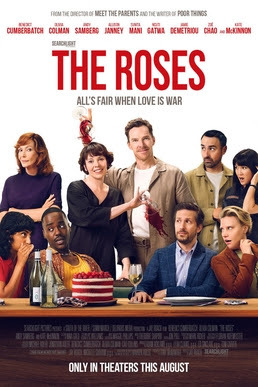
Someone out there is spending tons of money publicizing thenew British film, The Roses. It was the feature attraction, over LaborDay weekend, at the very popular Century City Mall, and I’ve spotted elaborate merchandising attempts at mysupermarket. Here’s the question: is the film worth all that attention? It’sgorgeous to look at, with Australia’s dramatic sea coast filling in (alas) forNorthern California. There’s a opening credit sequence that’s a delight. Andthe film stars two of Britain’s finest, Benedict Cumberbatch and Olivia Colman,as loving spouses who can’t quite adjust to a change in their maritalcircumstances. Both are lively presences who have a talent for dishing outnasty quips at one another’s expense.
Moviegoers with long memories (or subscriptions to AmazonPrime) might recall that The War of the Roses, a cleverly-titled novelby Warren Adler, was made into a 1989 battle-of-the-sexes film starring MichaelDouglas and Kathleen Turner as marital sparring partners. The highly popularblack comedy was cleverly directed by Danny DeVito, who also cast himself as achain-smoking divorce attorney. Serving as narrator, DeVito takes the viewerback to the meeting of Douglas (as Oliver) and Turner (as Barbara) at anauction for high-end collectibles. Both have a passion for home design (and aspecial yen for English ceramics), so when they marry and nest in a mansion,décor is very much on their minds. Ultimately, alas, the bloom is off theRoses, and Barbara demands a divorce. Moreover, she demands full custody oftheir dream house, something Oliver would never willingly grant. Soonnothing—and no one—is safe, including the household pets and Oliver’s prizedsportscar. It all builds to a grim conclusion that is a hoot if you enjoyseeing things go smash.
I’m not sure The War of the Roses has much of a pointto make (outside of this: never run over your spouse’s cat). But it’s anuproarious exploration of people at their worst, and we can all use a goodbitter laugh from time to time. By contrast, the new British film, The Roses,seems determined to be about something. More precisely, it seems to want to putits finger on how marriages go sour, and when precisely this happens. Theo andIvy Rose are an English couple who share a snarky sensibility. They’ve moved toNorthern California to pursue their creative passions. Theo is a trainedarchitect with a taste for the ultra-modern. Ivy is a chef who has put herprofessional aspirations aside while raising two children, until Theo buys hera hole-in-the-wall diner she promptly renames “We’ve Got Crabs.” As it turnsout, the same natural disaster that scuttles his newest and mostinnovative design proves to be a boon to her little café. So she’ssuddenly famous, and he’s out of work.
The film then becomes a study of what happens to a marriagein which one partner is thriving professionally while the other is put out topasture. (I’m certain matters are all the worse because it’s the formerlystay-at-home wife who’s suddenly the Next Big Thing.) The topic is definitely apertinent one, but this film seems determined to cover lots of territory bybringing in additional plot strands. There are many new characters (the ratherbaffling children, the horny best friend, the doofus buddy, the sinisterattorney) to distract from the central his-and-hers conflict. The irony of theconclusion is well handled, with a nice jab at the “smart house” Theo hasdesigned, but well before that point I was tired indeed of the couple’soverblown spat.
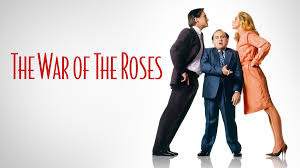
September 12, 2025
For The Birds: “Birdman of Alcatraz”
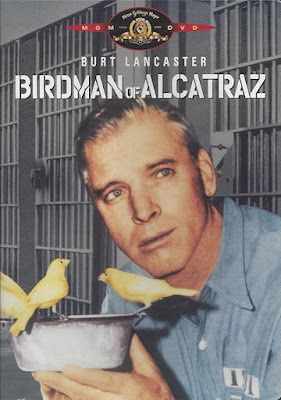
Birdman of Alcatraz? As a youngster, I was fascinatedby this intriguing title. And I knew that Burt Lancaster had won plenty ofkudos for his portrayal of Robert Stroud, who—sentenced to life imprisonment insolitary confinement for committing two murders—became a world authority on ouravian friends. I didn’t know the movie was based on a sympathetic biographyof the still-living Stroud by Thomas E. Gaddis. On the strength of thisbiography, Gaddis became a character in the 1962 film, and (portrayed by EdmondO’Brien) serves as its narrator.
Biographers have always had an interesting relationship withthe film industry. At a recent conference of the Biographers InternationalOrganization, I heard Pulitzer-Prize winning biographer Kai Bird talk about thethrill of seeing his book on J. Robert Oppenheimer brilliantly translated to thescreen. And right now my longtime friend Jack El-Hai is eagerly awaiting therelease of Nuremberg, based on his The Nazi and the Psychiatrist. Otherserious biographers are less happy about what Hollywood has done to their well-researchedwork. But it’s also true that there’s a place for biographers in sharing withthe moviegoing public the behind-the-scenes facts related to popular films.
My colleague Kate Buford is the author of Burt Lancaster:An American Life, as well as Native American Son: The Life and SportingLegend of Jim Thorpe. Because of her scholarly reputation, as well as herskills as a public speaker, Kate has been asked to do audio commentary onseveral of Lancaster’s major films. When I recently watched Birdman ofAlcatraz for the very first time, I was dazzled by Lancaster’s complexperformance as well as by the moody black-&-white cinematography ofHollywood veteran Burnett Guffey. I also appreciated the supportingperformances of such classic Hollywood actors as Karl Malden, Thelma Ritter,and (in an Oscar-nominated role) Telly Savalas as a likable fellow inmate. Idon’t usually have the time to re-watch a film while listening to a commentarytrack. But when I saw Kate Buford’s name on the screen, I knew I had to payattention.
Given her exhaustive research, Kate was able to put Birdmanof Alcatraz into context for me. She helped me to understand how much thisfilm was a product of Lancaster’s personal and social values. It was he, ashoncho of Norma Productions, who chose relative newcomer John Frankenheimer todirect, after firing British director Charles Crichton (known for comedyclassics like The Lavender Hill Mob). And he imbued the material withhis own dedication to progressive social concerns. The evolution of Stroud from crazedkiller to gentle soul devoted to nurturing canaries is heightened in the screenversion, but Kate makes clear that the actual Stroud never entirely lost hisvolatile edge. Part of the reason for his abrupt transfer from Leavenworth(where he had a full aviary and research lab) to the new, modern, and verystringent Alcatraz was that he was secretly using some of his equipment toconcoct alcohol for his own pleasure. And his real-life aggressive homosexuality (neverhinted at in the film) helps explain why over the years of his confinement(from 1909 until his death in 1963) he was so stringently guarded.
The film makes for such powerful viewing that I would havethought it earned a fistful of Oscars. There were four nominations (includingfor Lancaster and Guffey), but no wins. Not a surprise, really. This was a yearfor inspirational projects like The Miracle Worker, To Kill aMockingbird, The Longest Day, and big winner Lawrence of Arabia. Sothe camels beat out the birds in 1963.
Beverly in Movieland
- Beverly Gray's profile
- 10 followers



